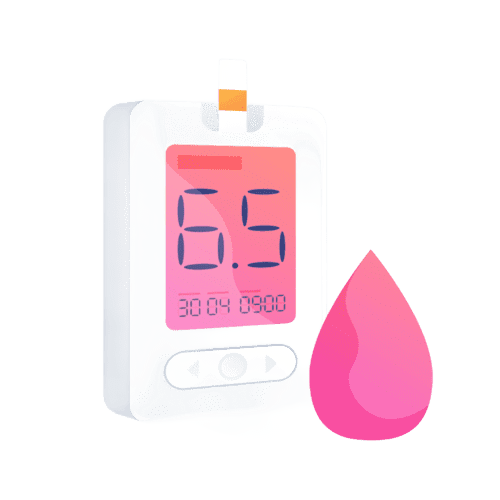Preparing for a process audit involves structured planning, clear communication, and employee engagement. Key practices include maintaining audit readiness, conducting pre-audit assessments, using process mapping tools, and ensuring proper documentation control. Engaging process owners and fostering continuous improvement enhances audit success while addressing common challenges like resource constraints and stress.
The Ethics of Software Design in Biomedicine: Navigating Complexities and Ensuring Responsible Development
Explore the ethical challenges and risk management strategies in biomedical software design, emphasizing the importance of comprehensive frameworks like the Software Development Impact Statement (SoDIS) to safeguard patient safety, privacy, and equity in healthcare technology.

In the modern era, technology plays an increasingly crucial role in the field of medicine. The advent of advanced software applications has revolutionized how healthcare professionals diagnose, treat, and manage patient care. However, as the reliance on technology grows, so does the need for ethical considerations in software design, particularly within the biomedical domain. This article delves into the ethical challenges associated with biomedical software design, explores risk identification and management strategies, and emphasizes the importance of comprehensive ethical frameworks to ensure safe and effective healthcare technology.
The Intersection of Technology and Biomedicine
Technological advancements have led to the development of sophisticated software systems that assist in various medical functions, such as data management, diagnostics, treatment planning, and patient monitoring. These systems have the potential to improve healthcare outcomes significantly. However, the complexity of biomedical software design and the high stakes involved require developers to consider the ethical implications of their work.
Biomedical software must be designed with a broad understanding of its impact, extending beyond the immediate technical requirements. Focusing narrowly on functionality or efficiency without considering the broader ethical and social contexts can lead to unforeseen consequences that may jeopardize patient safety and privacy.
The Importance of Ethical Software Design
Ethical considerations in software design are paramount, especially in biomedicine, where human lives are directly impacted. The World Health Organization (WHO) defines health as „a complete state of physical, psychological, and social well-being, not merely the absence of disease or infirmity.” This broad definition underscores the need for software that aligns with ethical principles to ensure holistic patient care.
Failure to incorporate ethical principles in software design can lead to severe consequences, such as patient harm, breaches of privacy, and loss of trust in medical technology. For instance, a seemingly minor software error could result in incorrect dosage recommendations, misdiagnosis, or failure to detect life-threatening conditions.
Common Ethical Challenges in Biomedical Software Design
1. Data Privacy and Security
One of the foremost ethical concerns in biomedical software design is data privacy. Medical data is highly sensitive, and any breach of confidentiality can have dire consequences for patients. Developers must ensure robust security measures to protect patient information from unauthorized access, data breaches, or misuse. Implementing encryption, secure authentication protocols, and regular security audits are essential practices to safeguard data.
2. Informed Consent and Transparency
Biomedical software often involves the collection and use of patient data for various purposes, including research, diagnostics, and treatment planning. It is crucial that patients are fully informed about how their data will be used, who will have access to it, and the potential risks involved. Obtaining informed consent and maintaining transparency throughout the software’s use is a fundamental ethical requirement.
3. Bias and Discrimination
Algorithms used in biomedical software can sometimes reflect biases present in the data used to train them. If not carefully addressed, these biases can lead to discriminatory outcomes, affecting patient care and treatment recommendations. Developers must strive to identify and eliminate biases in their algorithms, ensuring that software solutions are equitable and fair to all patient groups.
4. Safety and Reliability
The safety and reliability of biomedical software are critical, given the potential for direct impact on patient health. Software failures, whether due to bugs, design flaws, or unforeseen interactions, can lead to catastrophic outcomes. Rigorous testing, validation, and continuous monitoring are essential to ensure that biomedical software performs as intended under all circumstances.
%
Data Breach Incidents in Healthcare
In 2023, the healthcare industry experienced over 50% of all reported data breaches, with an average cost of $10.93 million per incident, highlighting the critical need for robust data privacy and security measures in biomedical software.
%
Bias in AI Medical Diagnostics
Studies have shown that up to 60% of AI-based diagnostic tools reflect biases present in training data, leading to potential disparities in healthcare outcomes among different patient groups.
Risk Identification & Management in Biomedical Software Design
Risk identification is a crucial aspect of ethical software design. It involves recognizing potential hazards that could arise from the software’s deployment and use. The following sections outline key risk identification and management strategies:
1. Software Failure
Software failures can range from minor inconveniences to major life-threatening situations. These failures may be due to coding errors, design flaws, or unexpected interactions within the system. For example, in a noted incident, a simple coding error in a medical device led to a situation where the emergency stop function was inadvertently linked with the general exit function, causing a delay in stopping a harmful process. Such incidents highlight the importance of comprehensive testing and scenario planning to mitigate risks.
2. The Role of the Software Development Impact Statement (SoDIS)
The Software Development Impact Statement (SoDIS) is a methodology designed to identify and mitigate potential negative impacts of software before its development. By examining the software’s design, tasks, and stakeholder interactions, SoDIS helps developers foresee ethical and safety issues. The process involves identifying stakeholders, analyzing tasks, assessing ethical concerns, and documenting solutions to mitigate identified risks. Implementing SoDIS can significantly reduce the likelihood of ethical oversights and promote safer, more responsible software design.
Case Studies Illustrating Ethical Risks in Biomedical Software
1. Eye Surgery Device Incident
In one case, an eye surgery clinic purchased a new ultrasound device with redesigned software to improve efficiency. However, the emergency stop function, previously a separate and easily accessible button, was combined with the power button to reduce complexity and cost. During a procedure, a surgeon could not quickly locate the emergency stop, resulting in the patient losing sight. This incident underscores the importance of considering user interaction and safety in software design, particularly in critical medical applications.
2. X-ray Machine Incident
Another example involved an X-ray device designed to move between preset positions. The software was tested and found to function correctly within its specified tasks. However, the software did not account for real-world scenarios, such as a patient remaining on the table after an X-ray. In one tragic instance, the machine moved to a low position, injuring a patient who was still on the table. This highlights the need for broader risk considerations, including user behavior and safety checks beyond the software’s immediate functional requirements.
Implementing Ethical Risk Management: The SoDIS Framework
The SoDIS framework provides a structured approach to ethical risk management in software design. It consists of four key stages:
1. Stakeholder Identification
Identifying all relevant stakeholders is the first step. This includes direct users such as doctors and patients, as well as indirect stakeholders like healthcare institutions, researchers, and regulatory bodies. Understanding how each stakeholder interacts with the software helps developers anticipate potential ethical concerns.
2. Task Analysis
Each task within the software development process is analyzed for its potential impact on stakeholders. This involves examining how tasks align with ethical principles and identifying any potential risks associated with their execution.
3. Ethical Issue Identification
Developers assess each task-stakeholder interaction for ethical issues. This step involves asking structured questions to identify concerns, such as whether a task might compromise patient privacy or safety.
4. Risk Mitigation and Documentation
Once ethical issues are identified, developers propose solutions to mitigate risks. These solutions are documented in the SoDIS report, providing a roadmap for addressing ethical concerns throughout the software development lifecycle.
The Broader Ethical Landscape of Biomedical Software
Ethical software design extends beyond individual projects to the broader societal implications of biomedical technology. Developers must consider issues such as:
1. Accessibility and Equity
Biomedical software should be accessible to all patient populations, regardless of socioeconomic status, geographic location, or cultural background. Ensuring that technology does not exacerbate healthcare disparities is an essential ethical consideration.
2. The Role of Regulation
Regulatory frameworks play a vital role in ensuring the ethical development and deployment of biomedical software. Compliance with standards such as the Health Insurance Portability and Accountability Act (HIPAA) in the United States and the General Data Protection Regulation (GDPR) in Europe is crucial for protecting patient rights and maintaining public trust.
3. Continuous Ethical Oversight
Ethical considerations do not end with the deployment of software. Ongoing monitoring, evaluation, and updates are necessary to address emerging ethical challenges, adapt to new technological developments, and respond to feedback from stakeholders.
Conclusion
Biomedical software design is a complex and ethically charged endeavor. The integration of technology into healthcare brings immense potential for improving patient outcomes, but it also raises significant ethical challenges. By adopting frameworks such as the Software Development Impact Statement (SoDIS), developers can proactively identify and address ethical risks, ensuring that biomedical software serves the best interests of patients and society.
Ethical software development requires a commitment to transparency, safety, and equity. It involves not only technical excellence but also a deep understanding of the social, psychological, and cultural contexts in which the software operates. As technology continues to evolve, the ethical standards guiding biomedical software design must adapt, ensuring that the health and well-being of patients remain at the forefront of innovation.
References
- Gotterbarn, D., & Rogerson, S. (2005). Responsible Risk Analysis for Software Development. Communications of the Association for Information Systems, 15, 730-750.
- World Health Organization (WHO). (1982). Preamble to the Constitution. Retrieved from http://www.opbw.org/int_inst/health_docs/WHO-CONSTITUTION.pdf.
- Software Engineering Code of Ethics and Professional Practice. (1999). Institute of Electrical and Electronics Engineers (IEEE) and Association for Computing Machinery (ACM). Retrieved from http://seeri.etsu.edu/Codes/TheSECode.htm.
- Maslow, A. (1970). Motivation and Personality. Harper and Row.
- Rogerson, S. (2004). The ethics of software development project management. In Bynum, T. W. & Rogerson, S. (Eds.), Computer Ethics and Professional Responsibility.
- Gert, B. (1998). Morality. Oxford University
- Murray, S. A., Grant, E., Grant, A., & Kendall, M. (2003). Dying from cancer in developed and developing countries.
Wanna know more? Let's dive in!
Process Audits Explained: A Comprehensive Guide
Process audits are systematic evaluations of organizational processes to ensure compliance, efficiency, and effectiveness. They identify areas for improvement, mitigate risks, and ensure regulatory compliance. This guide explores types, methodologies, benefits, and challenges of process audits, providing a comprehensive understanding of their role in enhancing operational performance.
Step-by-Step Process for Passing Your First ISO Audit with Flying Colors
Preparing for your first ISO audit? This step-by-step guide breaks down everything from documentation and employee training to internal audits and corrective actions. Follow these essential steps to ensure you pass your ISO audit with flying colors and achieve certification success. Start your ISO journey today!
How Technology is Revolutionizing ISO Audits: Digital Tools for Compliance
Digital tools and audit management software are transforming ISO audits by improving accuracy, efficiency, and compliance. Automation, centralized data management, and AI-driven analytics streamline processes, reduce errors, and enhance risk management, making ISO audits more manageable and future-ready for organizations aiming to maintain certification.
What to Expect During an ISO Surveillance Audit: Staying Compliant Year-Round
ISO surveillance audits are essential for maintaining certification and ensuring compliance with international standards. This guide outlines what to expect during these audits, the importance of continuous improvement, and strategies for year-round ISO compliance, helping businesses pass audits effortlessly while enhancing operational efficiency and customer satisfaction.
Top 10 Benefits of Conducting Regular Internal Audits
Conducting regular internal audits before ISO certification offers numerous benefits, including early detection of nonconformities, streamlined audit processes, improved documentation, and cost savings. These audits foster continuous improvement, enhance risk management, boost organizational efficiency, and ensure long-term compliance, setting the foundation for successful ISO certification.
The Ultimate Guide to Preparing for an ISO Audit
Preparing for an ISO audit can be challenging, with common mistakes like poor documentation, insufficient internal audits, and lack of leadership involvement. This guide explores these pitfalls and offers expert tips, an audit readiness checklist, and strategies to ensure a smooth path to successful ISO certification.
Comprehensive Overview of Different Types of Audits
We explore various types of audits, including system, human error, clinical, cybersecurity, and business continuity audits. Each audit plays a unique role in ensuring compliance, improving efficiency, and reducing risks across different industries, helping organizations achieve their quality, safety, and operational goals.
Online Networking and Individual Development: A Deep Dive
Online networking enables global collaboration, transcending geographic limitations for personal and professional development. Through models like T-learning, I-learning, M-learning, and N-learning, individuals engage in knowledge sharing and growth. Effective e-moderation, scaffolded learning, and addressing challenges ensure productive and enriching online development experiences.
Networking and Innovation
Networking plays a crucial role in fostering innovation by enabling firms to share knowledge, access new markets, and pool resources. This article explores how diverse networks, including formal alliances and informal relationships, contribute to innovation while highlighting challenges such as network complexity and potential failures.
Developing a Comprehensive Networking Strategy
Developing a strategic networking plan is crucial for career advancement. By setting clear goals, identifying key contacts, and maintaining meaningful relationships, professionals can unlock hidden opportunities, enhance their brand, and foster valuable collaborations that support long-term growth. Networking is an ongoing process essential for sustained career success.
Networking at Events
Networking is essential for career growth. Success lies in preparation, active engagement, and thoughtful follow-up. By mastering these strategies, you can create meaningful connections at any event, opening doors to opportunities and collaborations that can significantly impact your professional trajectory.












